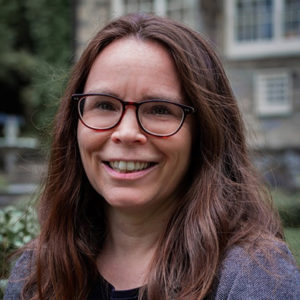
Carbon is continuously being pumped into the atmosphere at a rate of 50 billion tons per year. Achieving net zero by 2050 will not be possible by reducing emissions through transitioning to renewable energy alone. We need to start removing the carbon already emitted and finding ways to store it to keep it out of the system for centuries. Direct Air Capture (DAC), the process of capturing carbon dioxide from the air through a series of chemical processes akin to photosynthesis, has been an area of research that offers both solutions and challenges in the fight to slow climate change.
Jennifer Wilcox, Presidential Distinguished Professor of Chemical Engineering and Energy Policy, currently leads the Department of Energy’s Office of Fossil Energy and Carbon Management and has been researching DAC for decades. Her research in the technology of DAC brought her closer to the real-world applications and how to incentivize individuals and industries to opt for decarbonization through DAC. She works now with the aim of making DAC technology cost effective and scalable to the point that they can offer more solutions than challenges.
Wilcox describes DAC technology as “synthetic forests,” and explains how the facilities themselves take up less space and can be up to a hundred times more efficient than a forest. However, there are limitations and drawbacks that have hindered DAC from being deployed on a larger scale, and one of the big questions is “where does the carbon go once it is captured?”
Wilcox answers this question and gives insight into some of the nuances of the challenges with DAC and its integration into communities in an interview with the New York Times. The article is part of its “Visionaries” series, “which looks at figures who are trying to transform the way we live.”
“[What] do you do with all the CO2? The one approach that scales is the depleted oil and gas reservoirs: injecting it deep underground…Deep underground storage of CO2 is not new — the oil industry has been doing it for nearly 40 years through enhanced oil production, which is a commercial-scale activity today. Through this industry, we have gained expertise in safe and secure storage, and the same skills, work force, and expertise will apply for dedicated CO2 storage projects. Similar trapping mechanisms that allowed oil and gas to be formed over millions of years deep underground will ultimately trap CO2 as we work toward reversing the flow of carbon back underground, and we’re working to build out the infrastructure.”
As DAC becomes more widely accepted, Wilcox imagines this technology should be used to decarbonize industries that are less able to utilize renewable energy sources such as cement and steel industries. Wilcox imagines it also being a way to decarbonize the paper industry as long as there are low-cost low-carbon supply chains that make it worth it for the buyer.
While Wilcox works on large-scale technologies at the bureaucratic decision-making level, she strongly encourages individual action through smaller scale choices such as growing your own food and transitioning to solar.
“I think that people’s individual decisions are a mode of communication. If your neighbor sees you put solar panels up, you talk about it. And I think that sending a message by example is a really critical element. So, efforts that start with people’s individual decisions ultimately have an impact.”
Read “Can carbon capture be a part of the climate solution?” at the New York Times.
